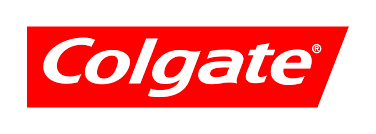高露洁棕榄有限公司 (CL.US) 2025年第三季度业绩电话会
文章语言:
简
繁
EN
Share
Minutes
原文
会议摘要
Colgate-Palmolive addresses sluggish category growth and market challenges through strategic innovations, AI investments, and regional adjustments, aiming to enhance organic sales, net sales, and EPS growth, while maintaining a competitive edge in global markets.
会议速览
A conference call discusses Colgate Palm Olive's third quarter 2025 earnings, including forward-looking statements, non-GAAP financial measures, and future plans, with executives providing insights and opening the floor for questions.
Despite challenging market conditions, the company is leveraging its global footprint and emerging market exposure to drive category growth. Key strategies include enhancing innovation through AI, focusing on omnichannel demand generation, and optimizing supply chain efficiency. The 2030 strategy aims to reaccelerate growth and outperform by prioritizing market share gains, pricing opportunities, and revenue growth management, supported by strong cash flow and strategic investments.
A detailed discussion on the challenges posed by a sluggish household products category and the strategic adjustments being implemented to improve organic sales growth. The dialogue highlights the impact of market volatility, particularly in North America, and the steps being taken to address underlying performance weaknesses, emphasizing the importance of adapting to a changing consumer landscape and continuing investment in growth initiatives despite current economic pressures.
The dialogue discusses mixed global market performance, highlighting strong growth in Colgate's e-commerce and innovation in China, while noting challenges in premium e-commerce and economic weaknesses in Eastern Europe and Central America. It emphasizes the company's strategic focus on innovation, premium segments, and gaining market share in growing categories like cat and wet pet food, despite short-term category sluggishness and external pressures such as raw material inflation and tariffs.
Discussed impact of product reformulation on Latin America's oral care sales, noting initial volume drop and market share decline due to consumer complaints. Emphasized ongoing efforts to replace affected products, anticipate margin recovery, and adapt pricing strategies to improve volume shares amidst regional price competition.
The dialogue discusses the impact of India's GST tax change on the business, particularly in oral care and toothpaste categories, highlighting price reductions and inventory disruptions. It anticipates improved performance in Q4 and long-term benefits, while addressing sluggish demand in rural areas and focusing on premiumization and urban modern trade growth.
Colgate discusses its recovery plan for Total in Latin America post-formula change, efforts to revitalize the US drugstore channel, and potential expansion of Elmex in new markets, emphasizing strong marketing and innovation strategies.
Discussion reveals slight increase in promotional activities, with a focus on premium and super-premium segments, and deliberate core innovation strategies to stimulate demand in lower price points, aiming for global premium market growth.
Discusses the European market's ability to maintain positive pricing amidst prolonged inflation, emphasizing the role of innovation in driving premium pricing, while balancing volume growth challenges.
Discussed factors influencing Q4 organic sales growth, including improved company performance, market destocking normalization, and continued impact of private label pet food exit, projecting growth in line with Q3's 1.2%.
A financial analyst inquires about the factors affecting Colgate's sales growth, questioning the impact of market trends versus company-specific challenges. The dialogue explores global industry growth perspectives and assesses the potential for addressing underperformance through strategic initiatives.
Global categories show initial slowdown due to inflation and consumer uncertainty. Currently, volumes are flat with pricing stable, indicating a slower market script compared to previous exits.
A discussion focuses on the company's strategies to enhance organic growth, margin, and earnings per share in a sluggish market, emphasizing proactive measures to adapt to current conditions and potential future scenarios.
The dialogue discusses the impact of raw material inflation, particularly palm oil, on gross margin performance. It highlights year-over-year declines in margins due to higher-than-expected inflation, noting that Q3 of the previous year set a high benchmark. The speakers anticipate some relief in Q4 from reduced material inflation, though tariffs and transactional FX impacts will persist. They also address geopolitical factors affecting palm oil markets, emphasizing ongoing monitoring of supply chain dynamics.
Discussion focused on anomalies impacting gross profit, easing commodity costs, and strategic advertising spending amid AI and automation trends, aiming for efficiency and optimal return profiles.
The dialogue highlights the strategic importance of AI in enhancing advertising efficiency, optimizing marketing and digital strategies, and accelerating innovation. It discusses the company's investments in AI, its application in marketing and content creation, and its role in driving productivity and growth. The focus is on leveraging AI to improve return on investment, engage consumers, and collaborate with major retailers to capitalize on e-commerce trends.
The dialogue discusses the shifting market dynamics favoring cats in both the US and EU, highlighting innovation and growth in the cat food sector. It addresses inventory adjustments, particularly in e-commerce, and the impact of private label products on sales. The conversation emphasizes strategic growth opportunities, supply chain optimization, and the positive effects of science-based innovation on market share and margins.
A discussion on overcoming market challenges through strategic pricing, improved supply chain execution, and leveraging strong brand investments, highlighting opportunities in growth segments like Cat and Wet foods, and the benefits of favorable foreign exchange rates.
Despite economic challenges including foreign exchange impacts and higher raw material costs, the company forecasts low single-digit sales growth, with a focus on enhancing business model flexibility and efficiency. Strategic restructuring and investments in areas like AI and supply chain personalization are planned, aiming to achieve continued dollar-based earnings growth and support the 2030 strategy.
Discusses strategic initiatives underpinned by AI to drive innovation, enhance demand planning, and create competitive advantages, focusing on accelerating category growth and improving efficiency through technology investments.
The dialogue highlights the company's strategic reallocation of resources towards productivity and AI, aiming for efficiency and strategic investments. It discusses the challenges in China's market, particularly focusing on the Hna subsidiary's transition from bricks and mortar to online platforms, emphasizing premium innovation and brand building for market growth.
要点回答
Q:What are the priority actions set out in Colgate's quest strategy?
A:The priority actions set out in Colgate's quest strategy include focusing on delivering more impactful science-based innovation across all price tiers, omnichannel demand generation, and upskilling the commercial organization to be more consumer-centric. The company is also prioritizing investments in digital data analytics and AI to drive more dynamic change.
Q:How is Colgate planning to improve its innovation and performance?
A:Colgate is implementing a new innovation model with additional resources to deliver impactful science-based innovation across all price tiers. The new model includes investment in people, process improvement, and the use of AI to prioritize innovative products and packaging. They are also focusing on omnichannel demand generation and are scaling new capabilities to build brand strength and drive brand penetration.
Q:How is Colgate's market share performance in specific categories?
A:Hill's underlying performance was very good in a softer category as Colgate successfully gained market share in low development segments like Cat Wet and Small Paws. The company's brands across categories have shown solid health following years of investment, providing opportunities to drive pricing and offset raw material inflation.
Q:What are the impacts and speed of effecting the changes in Colgate's focus areas?
A:The impacts and speed of effecting changes in Colgate's focus areas are designed to improve organic sales growth performance and drive dollar-based earnings per share growth. The company is executing against the changes implemented earlier and is introducing new changes to align with the current environment. Colgate is confident in its position and execution to stimulate growth despite the challenging category environment.
Q:How is the operating environment in different regions, particularly in North America and Europe?
A:In North America, the operating environment was slightly better for Colgate, especially in categories other than skin health. However, consumer sentiment remains weak, with higher levels of couponing and down traffic in Hispanic areas. The category takeaway in the U.S. was softer than anticipated in September. In Europe, the pricing environment is weaker, especially in Eastern Europe, particularly in Poland.
Q:What is the status of pricing, weakness in Eastern Europe, and performance in Mexico and Brazil?
A:Pricing is weaker in Europe, and there is a notable weakness in Eastern Europe, especially in Poland. The company's performance in Mexico and Brazil is mixed, with organic growth in mid single digits, whereas Colombia and Central America are softer due to economic weaknesses and political volatility. China is a mixed bag with robust e-commerce and innovation-driven growth for Colgate, while premium e-commerce categories are seeing weakness. The company is focused on executing core innovations and pushing premium innovation.
Q:What factors are influencing Hills' financial performance?
A:Hills is experiencing raw material inflation, tariffs, and trade destocking, but is still delivering dollar-based earnings per share and strong cash flow.
Q:What was the reason for the decline in oral care mentioned in the speech?
A:The decline in oral care was attributed to the replacement of trade inventory in connection with the formula change of Colgate Total.
Q:What impact did the formula change of Colgate Total have on the company's financials and market shares?
A:The formula change led to a 150 basis point negative impact on volume from the Colgate Total replacement, causing some temporary mouth irritations and impacting market shares. Market shares began to improve after the reformulated product was introduced in Brazil and other Latin American markets.
Q:How is Hills addressing the challenges in the rural areas of India?
A:Hills is focusing on a strong premiumization strategy for growth in modern trade, particularly in urban areas, and will review the business in detail with teams next week.
Q:What are the company's plans regarding the drugstore channel and the potential for their product, Elmex, in the US?
A:Hills plans to engage in conversations with the drugstore channel to improve category dynamics, focusing on revenue growth management and premium therapeutic innovation. They are also confident in the performance of Colgate Total and are excited about the long-term growth potential of the market.
Q:What has been the response to the increased competitive activity and promotional intensification in the US market?
A:There has been a slight uptick in promotional activity and more couponing, but it's not yet back to pre-COVID levels. Retailers and competitors are looking for solutions to drive sales and volume.
Q:How is Hills countering the intensified competition and promotions by focusing on core innovation?
A:Hills is deliberately looking at more core innovation across their franchises to stimulate demand, particularly at the lower end, while continuing to focus on the significant growth opportunity in the premium segment globally.
Q:What is the outlook for maintaining positive pricing in Europe?
A:The company is pleased with the continued pricing in Europe and has learned to manage price effectively. They plan to ramp up innovation, particularly focusing on science-based innovation for the premium segment to allow for pricing, although it will be a balance due to prolonged inflation.
Q:What are the factors contributing to Q4 organic sales growth being in line with the year to date?
A:The factors contributing to Q4 organic sales growth being in line with the year to date include the impact of total to the total company improving, destocking in certain markets and products leveling out, and the exit from private label pet food which impacts Q4 in a similar way it did in Q3.
Q:What is the level of global industry growth and how does it compare to the 3-5% longer term benchmark?
A:Global industry growth is currently rolling up to levels where it's below the historical 3-5% longer term benchmark. Categories are now projected to grow at a script rate on a global basis, likely more like a flat to a slight decline in the first half.
Q:What is the impact of inflation and consumer uncertainty on the company's sales?
A:Inflationary pressure initially slowed growth due to lower pricing. As prices are coming back in volumes and inflation continues, the impact is clear and underpins continuous consumer uncertainty. This results in overall growth being script on a global basis and slower in the first half.
Q:How does the company's Q4 performance compare to Q3 and what are the expectations for Q4?
A:Q4 is expected to improve from Q3 with volumes being flat, pricing also flat, and the gross profit margin for Q4 at 60% plus or minus sequential improvement from Q3 due to less material inflation and a slightly greater tariff impact.
Q:What is the reasoning behind the increased advertising spending and how is the company planning to optimize it?
A:Colgate has increased advertising spending over the years to support brand investments. With the current performance of the categories and the intention to apply AI and automation for savings, there is a thought process around being more strategic with advertising spending to optimize it and achieve a better return profile.
Q:What is the projected advertising spend for the current year and how has it been adjusted?
A:The company expects advertising dollars to be roughly flat compared to the previous year on a percent of sales basis. They anticipate the fourth quarter's advertising spend to be in line with the year to date and have adjusted spending in some markets where consumers are facing more challenges. There have been delays in innovative launches in these markets, but the company continues to invest robustly against return on investments and media efficiencies.
Q:What is the company's strategic focus regarding AI?
A:The company's strategic focus is on AI as a key strategic enabler for growth and productivity. Investments in AI have been significant, with training and upscaling of teams on horizontal AI to increase productivity. They have launched AI hubs using leading generative AI models and plan to re-engineer processes to enhance efficiency. They are also focusing on marketing and content innovation with generative AI to improve consumer engagement and real-time visual storytelling.
Q:How will AI impact the company's innovation and marketing strategies?
A:AI will be pivotal in transforming marketing and digital strategies, significantly enhancing consumer engagement through optimized real-time content. The company is conducting pilots that are showing early success and plans to use AI to step up the quality and quantity of innovation, generate more consumer-centric concepts, and get them tested and validated quickly. They are also thinking about collaborating with big retailers to unlock the potential of AI in e-commerce.
Q:What is the anticipated impact of private label sales on the business moving forward?
A:The company expects private label inventory to continue to be reduced through the fourth quarter and into the first half of 2026, which will be beneficial for the business and allow focus on short-term and long-term growth opportunities. Private label sales impacted the business negatively this quarter, but the underlying structure of the business is strong with broad-based growth in organic sales despite a category slowdown.
Q:What is the company's stance on pricing and how is it addressing the impact of foreign exchange?
A:The company maintains a strategy of balancing competition and commodities while considering pricing actions for offsetting the impact of foreign exchange. Despite seeing favorable movements in foreign currencies over the past quarter, they still expect a negative impact on the year, which is mostly in Europe. They are encouraged by the fact that they have seen positive pricing in every division in the third quarter and plan to continue looking for pricing opportunities.
Q:What is the outlook for earnings per share (EPS) and why has the company maintained its guidance?
A:The company's outlook for EPS reflects net sales growth of low single digits with a flat to low single-digit negative impact from foreign exchange, which improves in the back half of the year. They updated their organic sales growth to be roughly in line with the year to date. The company has maintained its EPS guidance, expecting it to be aligned with the year to date gross profit margin and with advertising roughly in line with the full year of last year. They have considered the impact of exiting private labels on run rate going forward.
Q:What are the main components of the sales growth and productivity program?
A:The sales growth and productivity program is designed to be flexible and to facilitate changes that help in making the company more efficient and adaptable. It includes estimated charges of 200 to 300 million, with the first charges expected to start showing in the fourth quarter. The program focuses on aligning with the 2030 strategy, which entails investments in areas like Omni demand gen, increased innovation, scaling capabilities, AI, and agentic AI, as well as educating teams to execute these strategies.
Q:What is the anticipated impact of the restructuring program on the company's bottom line?
A:The company expects to be able to continue delivering bottom line, dollar-based DPS growth despite the challenges faced in the current market. The restructuring program is estimated to have charges of 200 to 300 million, with the first impacts expected in the fourth quarter. The aim is not just to cut costs but also to reshape the company for future growth and align it with the 2030 strategy.
Q:What is the focus regarding the flexibility in the company's P&L?
A:The company has been working on building flexibility into the Profit and Loss (P&L) over the past 12 months, which has been critical in dealing with challenges such as incremental tariffs, foreign exchange fluctuations, higher raw materials costs, and category slow-downs. The focus on flexibility is ongoing as part of achieving targets and responding to market changes.
Q:How is the company planning to use technology to its competitive advantage?
A:The company is looking at technology as a means to gain a competitive advantage by innovating faster and bringing better, premium products to the market more expeditiously. It plans to utilize technology such as AI to automate demand planning and replenishment, which could lead to increased cash flow and reduced working capital. Additionally, the company is focusing on demand planning to ensure it is leveraging AI to its advantage.
Q:What are the key strategies for the Hna subsidiary in China and how are they addressing the challenges?
A:The Hna subsidiary in China is facing challenges, with growth at Colgate China being outpaced by the rise of e-commerce. The challenges are being addressed by focusing on improving the brick and mortar business and enhancing online communication to rebuild the brand more effectively. The company is implementing strategies to improve the go-to-market approach, particularly in brick and mortar, and is investing in online presence and e-commerce readiness. Premium innovation is set to be introduced in the fourth quarter to boost the premium side of the business.

Colgate-Palmolive Co.
Follow





